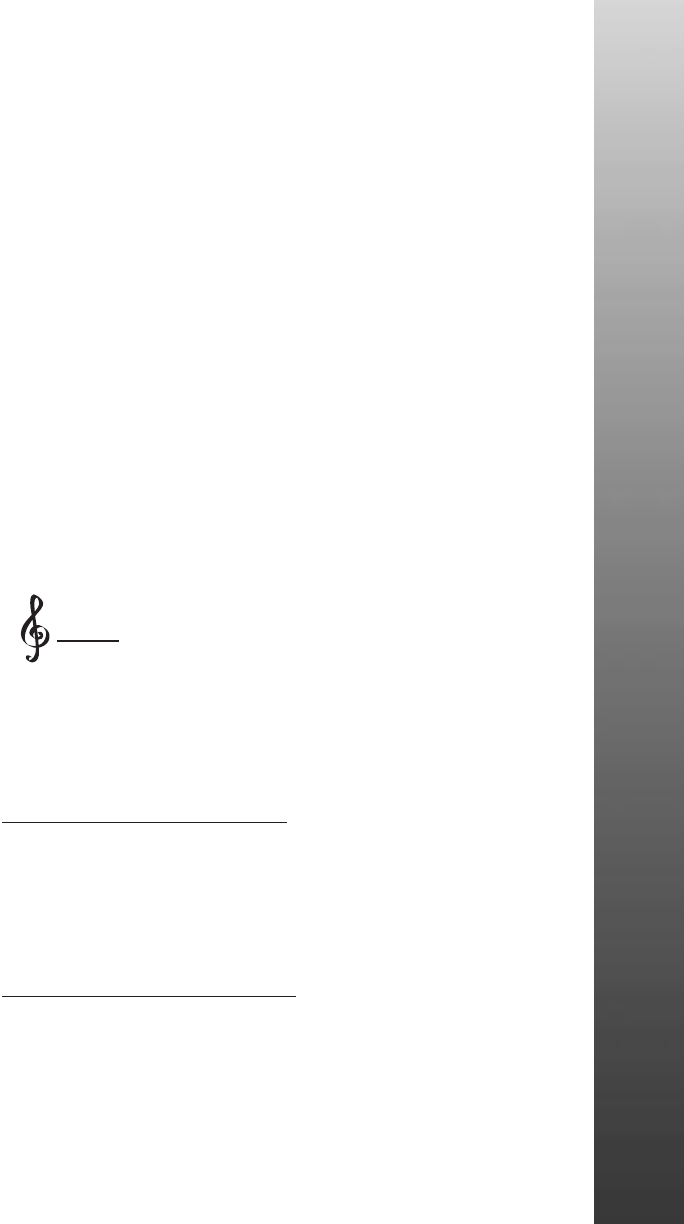
9
4. Using the tuning machine, stretch and retune the low-E
string to “D.” Then, tighten the locking topnut screw and
fine tune the “D” using the fine-tuning adjustment
screw.
5. Slide the D-Tuner forward (toward the bridge) while
applying slight downward pressure. The D-Tuner will
now be in the “E” position. The fine-tuning screw will
now be positioned on the top, flat surface of the
D-Tuner.
6. Check the tuning of the low-E string.
7. If the low-E string is out of tune, use the supplied 1.5mm
hex wrench to turn the set screw on the D-Tuner clock-
wise if the pitch is flat, or counterclockwise if the pitch is
sharp.
8. Pull the D-Tuner back to the “D” position and check tun-
ing. Push it back to the “E” position, check tuning and
readjust the set screw if necessary.
9. Once the set screw on the D-Tuner is correctly adjusted,
use only the fine-tuning screw for tuning. (The fine-tun-
ing screw will simultaneously tune both notes in either
position.)
It is recommended that the D-Tuner, fine-tuning
adjustment screw and bridge saddle be
cleaned and lubricated to ensure smooth oper-
ation. The saddle should be allowed to pivot up and down
freely to ensure proper operation of the D-Tuner.
Changing string gauges or deviation from proper pitch
(A-440) will necessitate readjustment of the D-Tuner.
Tremolo Bridge Height
Bridge height may be adjusted by means of the bridge
pivot bolts. Turn the pivot bolts clockwise to reduce
bridge height. Turn the pivot bolts counterclockwise to
increase bridge height.
tremolo Bridge Tension
The tension of the tremolo bridge is set by adjusting the
spring tension screws which hold the spring claw in place.
To gain access to the spring tension screws and spring
claw, remove the spring cover on the back of the guitar.
Note


















